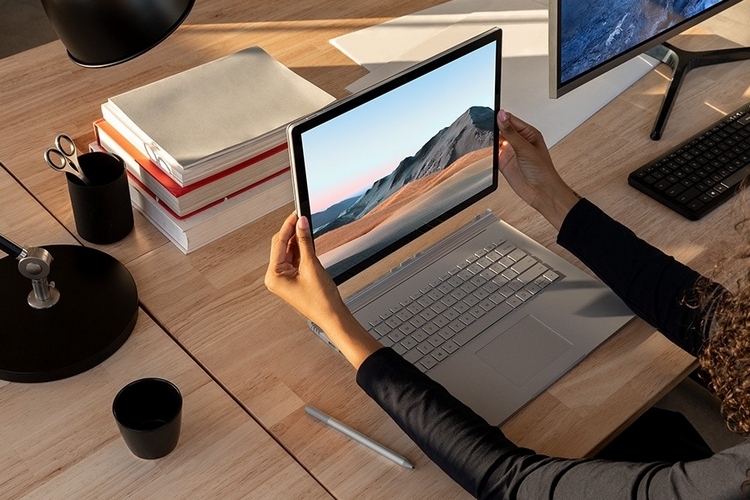
It’s been two years since the Surface Book 2 came out. As far as computing hardware goes, that’s just way too old, leaving Microsoft’s convertible laptop a little too old in the tooth to attract new users. That means, it’s the right time for the Microsoft Surface Book 3, which just made its debut.
Sadly, there are no big design changes this time around, with the laptop, basically, looking very much like its predecessor. Beneath the shell, though, the whole thing gets beefed up with a bit more muscle, allowing it to deliver as much as 50 percent more power than the outgoing model. So yeah, it’s the same laptop, just with more power, which should make it interesting for those already considering the Surface Book 2, but probably not compelling enough for others.

The Microsoft Surface Book 3 gets Intel’s 10th-generation i5 and i7 processors, with Intel’s Iris Plus integrated graphics and discreet Nvidia graphics. While that sounds standard for most modern laptops, the lack of design changes actually hurts it, since they’re restricted to using quad-core CPUs, instead of the six- and eight-core options now available in many higher-end laptops, like the MacBook Pro and the Dell XPS. The issue, of course, lies in the laptop’s detachable tablet design, which allows the monitor to be removed and used as a standalone touchscreen computer. At any rate, it’s something Microsoft might want to look at moving forward, as it leaves the machine quite underpowered compared to the high-end laptops it’s looking to compete with.
There are still two sizes of screens available: 13.5 inches (3000 x 2000 resolution) and 15 inches (3240 x 2160 resolution). The former gets the quad-core i5 and up to a Nvidia GeForce GTX 1650 Max-Q GPU, while the latter pairs the quad-core i7 with either a Nvidia GTX 1660 Ti or a Nvidia Quadro RTX 3000. Truth be told, it’s still a lot of power for a portable computer, although it does pale a bit when matched head-to-head with other laptops out there (there’s no ray tracking support in those cards, for instance).

The Microsoft Surface Book 3 also comes with up to 32GB of RAM, which should beef up the processing power a good amount, along with M.2 2280 SSDs, which are the fastest the outfit has ever used in their laptops. According to the outfit, this was highly requested by coders, who could use the fast storage for compiling, source control and package management. They can be fitted with either 1TB or 2TB of storage.

It has a claimed battery life of 15.5 hours for the smaller laptop and 17.5 hours for the larger model, so this should allow you to get a full day’s work done without recharging, provided, of course, those rated hours hold up. Other features include dual cameras (5.0 megapixel out front and 8.0 megapixel in the rear), dual far-field studio mics, front-facing stereo speakers, TPM 2.0 enterprise security chip, and a decent amount of ports (two USB-A, one USB-C, a full-size SD card reader, and a headphone jack).
The Microsoft Surface Book 3 is available now, priced starting at $1,599.99.
